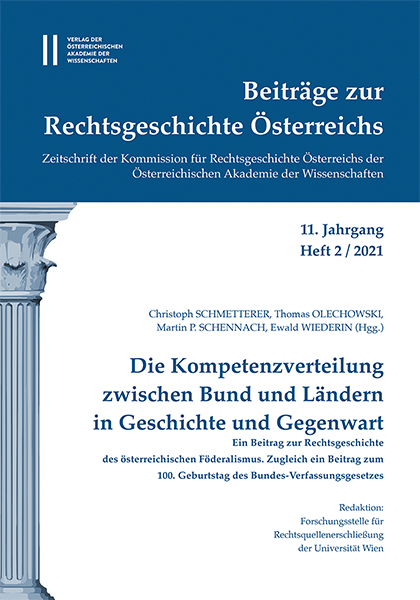
Beiträge zur Rechtsgeschichte Österreichs 11. Jahrgang Heft 2/2021, pp. 330-343, 2021/12/16
Die Kompetenzverteilung zwischen Bund und Ländern in Geschichte und Gegenwart
Ein Beitrag zur Rechtsgeschichte des österreichischen Föderalismus. Zugleich ein Beitrag zum 100. Geburtstag
des Bundes‐Verfassungsgesetzes
Due to the authoritarian principle dominantly anchored in the constitution of 1934, federalism, which had still been prevalent in the previous constitution, was reduced – despite the designation ‘federal state’ for the new state system. Accordingly, a continuation of the tendency towards a centralisation of competences, which had already been evident in 1933, can be seen. Therefore, the competences of the federal government were strengthened, whereas the Länder were deprived of autonomy. At the same time, the system of competences was simplified and made more flexible. In reality, however, these provisions were overlaid by those of the Constitutional Transition Act, which made an unveiled chancellor dictatorship possible.
Keywords: authoritarian principle – centralisation – competences – constitution